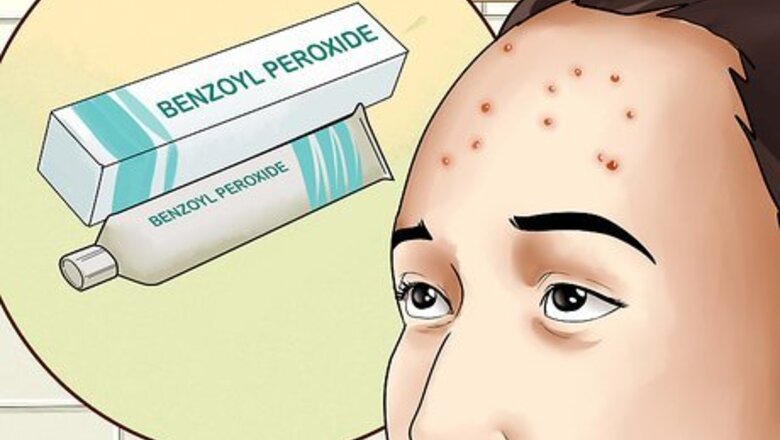
views
- At-home remedies like benzoyl peroxide, salicylic acid, essential oils, steam treatments, egg white masks, and apple cider vinegar toners all help.
- Change up your diet to reduce sugar and dairy while getting more vitamin A and D, and eating foods high in omega-3 fatty acids.
- Take care of your skin by exfoliating regularly, using a gentle cleanser, moisturizing with a non-comedogenic oil, and avoiding irritating products.
- Wash your hair often, keep pillowcases clean, and avoid hats that cover your forehead—and try not to touch your forehead!
Using At Home Remedies
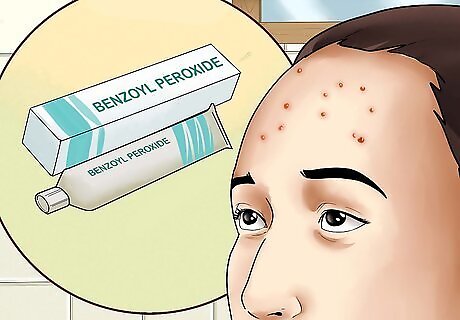
Use benzoyl peroxide. Benzoyl peroxide kills the bacteria responsible for acne, so applying it to your forehead will help get rid of the acne there. It also has the added benefit of removing dead skin and excess oils, which will unclog your pores. Look for over-the-counter products that contain benzoyl peroxide, which can be in concentrations of 2.5% to 10%. It may dry out your skin, make it scale as it dries, or cause stinging, burning, and redness at the site of application. Use it only as directed on the package. Before applying the benzoyl peroxide, it may be helpful to apply a topical retinol cream, which can help prevent your skin from drying out.
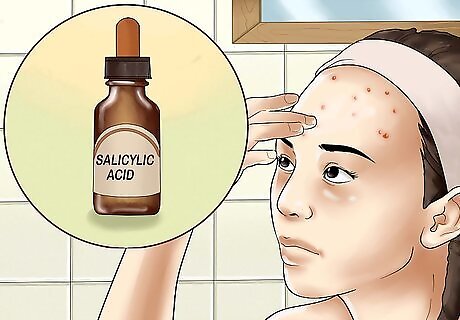
Try salicylic acid. In addition to benzoyl peroxide, salicylic acid can be found in over-the-counter cleansers and other facial products to help with your forehead acne. Products contain between 0.5% to 5% concentration of the acid. Side effects can include skin irritation and stinging. Apply a small amount to the skin as wait three days to see if your experience irritation. Do not use for longer period of time or do not use more than prescribed — apply only as directed by your doctor or the directions on the packaging. Salicylic acid is intended for use on the skin only — avoid applying it too close to your eyes, nostrils, or mouth.
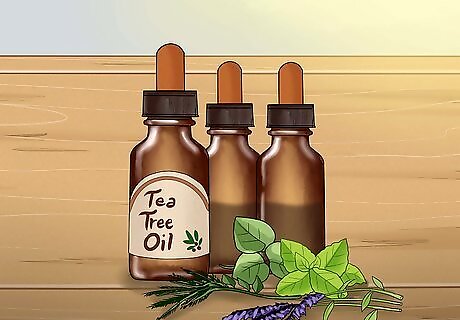
Apply essential oils to problem areas. Use a Q-tip or a cotton ball to spot-treat areas on your forehead. Essential oils may irritate your skin, so dilute one drop of essential oil with one drop of a carrier oil, such as jojoba, olive, or coconut. If your skin is sensitive, introduce the oil slowly. You can leave the oil on the skin or use warm water to rinse it off. Essential oils to try are: Tea tree oil Oregano oil Spearmint or peppermint oils Thyme Calendula Rosemary oil Lavender Bergamot oil
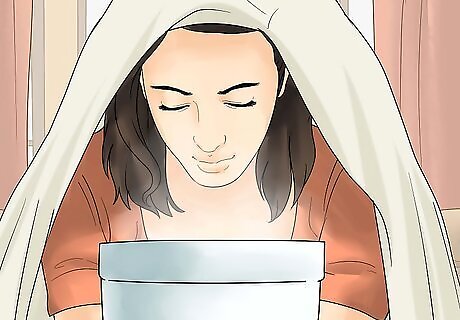
Give your face a steam treatment. Steam opens up your pores and helps get out the impurities. It’s also simple and cheap. To make a steam treatment: Fill a pot with water and heat it on the stove until it starts producing steam. Place the steaming water into a bowl and place it on the table. Lean over the bowl, keeping your face at least 12 inches from the bowl. Steam can cause severe burns, so be very careful. Cover your head with a towel and stay over the steam for 15 minutes. Dry your face afterwards. After the steam treatment, you can exfoliate or use a mask to help reduce the oil. You can add a few drops of an essential oil to your steam treatment.
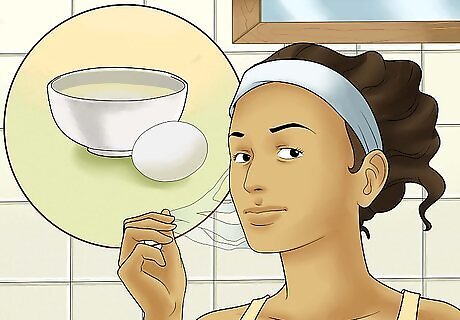
Make an egg white mask. Egg whites help with discoloration while firming and toning the skin. When preparing an egg white mask, make sure to whip the egg whites until they are foamy, like a meringue. You can add things like lemon for bleaching or honey for antibacterial properties. Mix three egg whites and one tablespoon of fresh lemon juice in a bowl until it’s white and foamy with peaks. Apply the mixture to a clean face with clean hands. Do not allow the mixture to enter your mouth, nose, or eyes. Leave for 15 minutes. Then rinse with warm water. Pat skin dry. Make sure you wash your hands after handling the egg whites. Apply moisturizer.
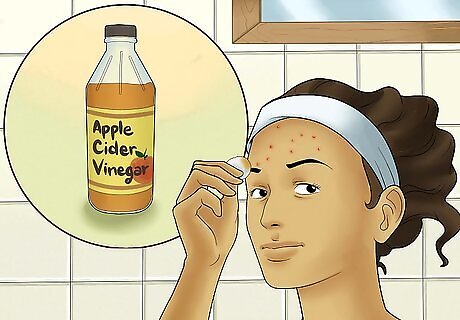
Try an apple cider vinegar toner. Mix one tablespoon of vinegar with two cups of water. Apply it to your face with a cotton ball. Apple cider vinegar is believed to help even out skin tone and reduce acne. Be aware apple cider vinegar may irritate sensitive skin. Start with a larger ratio of water to vinegar if you have sensitive skin.
Getting Rid of Acne Through Diet
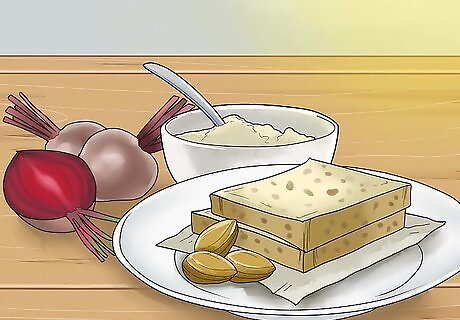
Reduce sugar. Start by staying away from foods with added sugar. Bacteria just love sugar, and bacteria cause acne. Also, a number of studies have indicated that low-glycemic index (GI) foods can reduce the severity of acne. Low-GI foods are those foods that release sugars into your blood more slowly. The lowest GI foods are: Bran cereals, natural muesli, rolled oats Whole wheat, pumpernickel, whole grain breads Most vegetables except beetroots, pumpkin, and parsnips Nuts Most fruit except watermelon and dates. Mango, banana, papaya, pineapple, raisins, and figs have medium GI. Legumes and beans Yogurt Whole grains are low- to medium-GI. The lowest GI are found in brown rice, barley, and whole grain pasta.
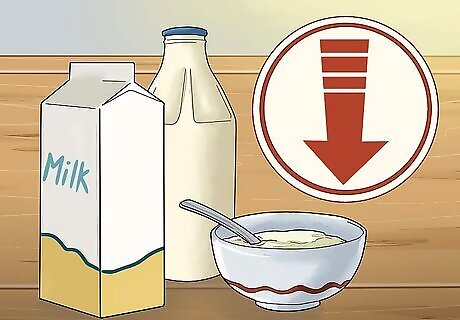
Reduce dairy. Studies have shown a small link between dairy and acne. If you eat a lot of dairy and have forehead acne, try reducing the amount of dairy in your diet.
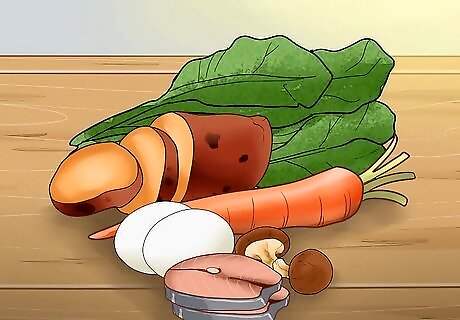
Get more Vitamin A and D. Vitamin A helps boost your immune system and is a natural antioxidant. Vitamin D helps boost the immune system, helps reduce inflammation, is anti-microbial, and helps reduce oil production. The best way to increase these vitamins is through food. Foods high in Vitamin A include vegetables, like sweet potato, spinach and other dark leafy greens, carrots, pumpkin, broccoli, red peppers, summer squash; fruit such as cantaloupe, mangoes, and apricots; legumes, meat, liver, and fish. Foods high in Vitamin D include fish, like salmon, tuna, mackerel, and cod liver oil; eggs, mushrooms; and oysters. Many foods are also fortified with vitamin D. You can also get Vitamin D through natural sunlight, as this triggers your body to produce the vitamin. Spend about 10 – 20 minutes outside without sunscreen each day. If your skin is darker, spend more time in the sun. Otherwise, be sure to practice sun safety by wearing a broad spectrum, SPF 30 sunscreen, a wide-brimmed hat, and covering up as much as possible. You can also take a D3 supplement.
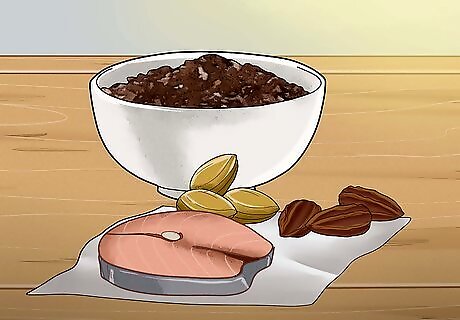
Eat foods high in omega-3s. Omega-3 fatty acids are believed to help control oil-producing molecules. You can find omega-3s in food. Seeds and nuts, like flaxseeds and flaxseed oil, chia seeds, butternuts, walnuts, are good sources. Fish and fish oils, found in salmon, sardines, mackerel, whitefish, and shad, also also very effective. Avocados are also a great source. You can also take a supplement.
Taking Care of Your Skin
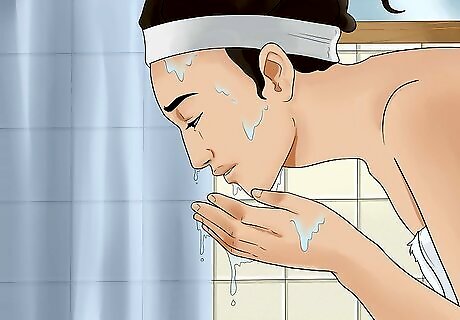
Wash your face twice a day. To help prevent acne on your forehead and anywhere else on your face, wash your face at least twice a day and after any activity that results in a sweat. Excessive sweat can increase the severity of acne. Do not use an abrasive that is harsh on the skin. Make sure to wash your face gently. Wash with your fingertips in light circular motions. Avoid washing your face too often. More than twice a day is not recommended.
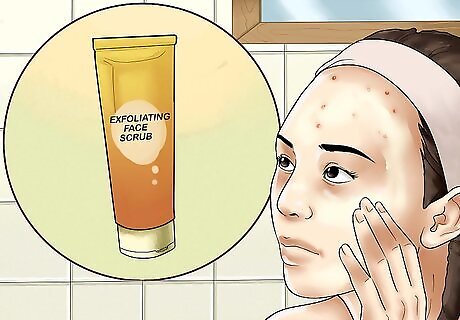
Exfoliate your skin. Once or twice a week, use an exfoliating face scrub. This can help by removing the outer layer of your skin and opening pores. It also helps remove dead skin and other pore clogging debris. Be very gentle when exfoliating your face to prevent irritation.
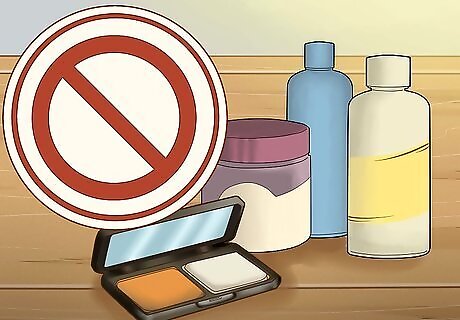
Avoid irritating products. Some products can irritate your skin and cause acne. If you have a lot of acne on your forehead, use makeup as sparingly as you can. Hair gels, hair mousse, hair spray, and sunscreens can cause forehead acne. The chemicals, oils, and grease in makeup, even “hypoallergenic” makeup, can be irritating and damaging. Make sure to remove all makeup before going to sleep.
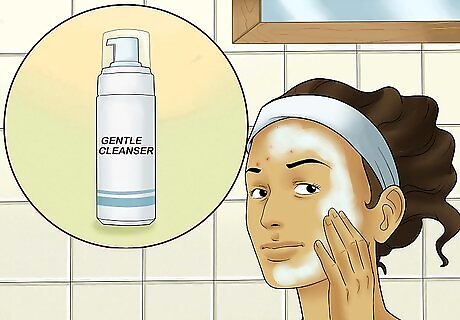
Use a gentle cleanser. Cleanse your face with mild cleansers, like Cetaphil, Olay, Neutrogena, or Aveeno. Look for a cleanser labeled as non-comedogenic. This means that the product doesn’t promote the formation of comedones, blackheads, whiteheads, or pimples. Examples include products from Neutrogena, Cetaphil, and Olay. You can also use bars with benzoyl peroxide, salicylic acid, or alpha hydroxy acids. There are many store-brand products that are non-comedogenic. Read the label to be certain. Avoid scrubbing your skin. This can cause damage to your skin like scarring, or turn the bumps into sores. It can also cause more acne because scrubbing can cause the infection to spread.
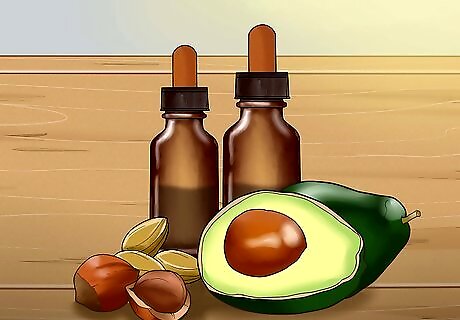
Moisturize with a non-comedogenic oil. Some moisturizers can clog your pores and make it greasy or oily. Try using non-comedogenic oils to moisturize your skin. They are less likely to clog pores. Try oils such as: Almond Oil Apricot Kernel Oil Avocado Oil Camphor Castor Oil Evening Primrose Oil Grape Seed Oil Hazelnut Oil Hemp Seed Oil Mineral Oil Olive Oil Peanut Oil Safflower Oil Sandalwood Seed Oil Sesame Oil
Preventing Forehead Acne
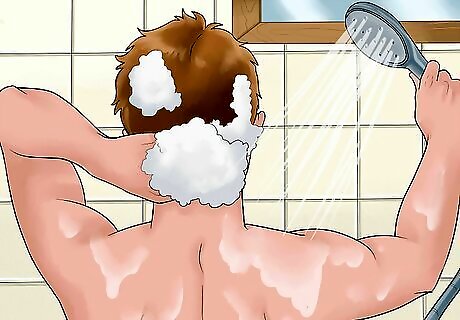
Wash your hair often. If you have forehead acne, it’s important to wash your hair often. This is especially important if you have bangs or hair that falls over your forehead, since it can transfer oil and impurities to your skin.
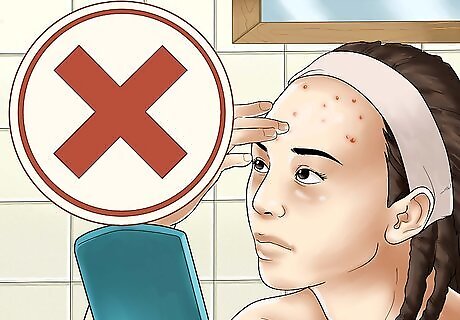
Try not to touch your forehead. Your hands can have oil and other impurities on them, which can clog your skin. Try to keep your hands and fingers away from your forehead. Wash your hands regularly if you touch your face a lot. This helps reduce the oil and other impurities on your hands.
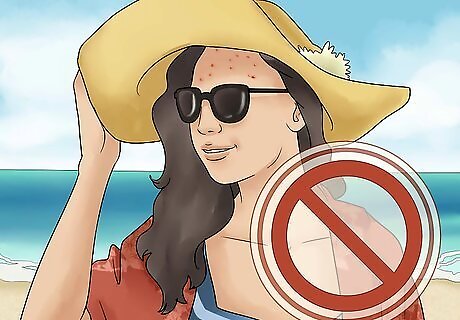
Avoid hats. Hats that cover your forehead can cause acne. Stay away from hats that cover your forehead. If you have to wear hats, make sure you clean them so oil and other impurities don’t build up on the hat and transfer to your forehead.
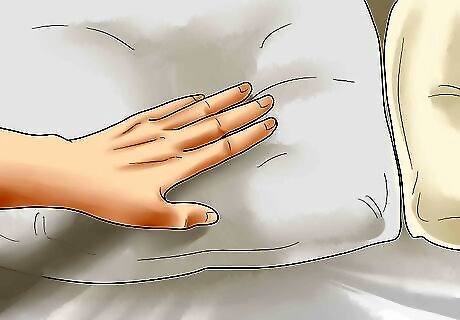
Keep your pillowcase and sheets clean. Sleeping on dirty, oily pillowcases, and sheets can cause acne on your forehead. Since you sleep with your face on these things, your forehead will just be picking up dirt, oil, and other impurities while you sleep. Wash your pillowcase twice a week to help prevent this.

















Comments
0 comment